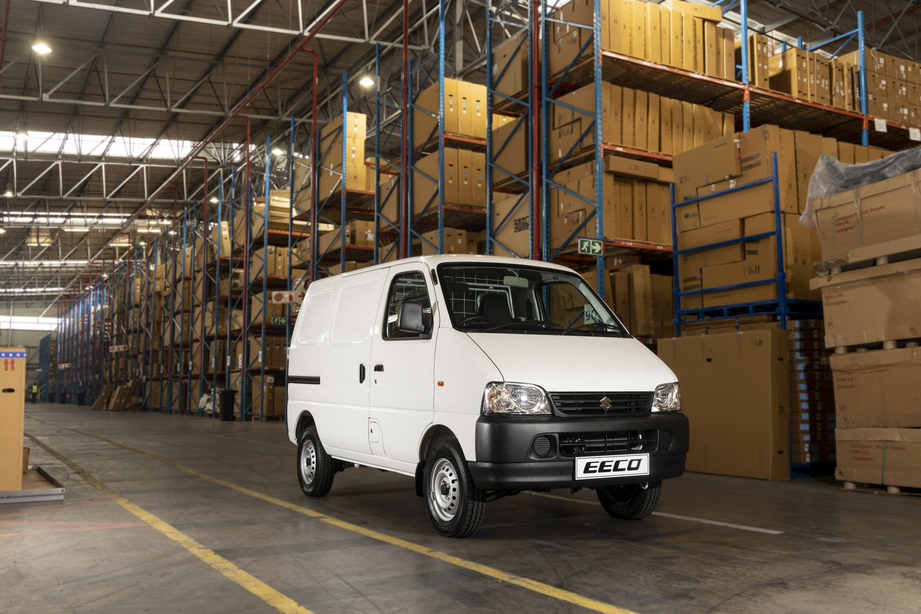
BYD brings affordable PHEV SUV to the market
BYD has added another model to its line-up in South Africa. This time it is the Sealion 5, which slots in below the larger Sealine 6, which is also available locally.
- Product News
- 15 December 2025
A new player in the commercial segment, specifically the panel-van category, has arrived in South Africa.

The Suzuki Eeco is a compact panel van with all the attributes that are required from a vehicle in this segment. It is a sibling of the well-established Super Cary bakkie.

What’s new?
For the local market, it is a brand-new entry designed for the efficient and safe transport of goods.
In India, it has sold close to a million units since its launch. The model that lands in South Africa is the newest version, with upgraded performance, design and safety.
Design:
With a load-carrying vehicle like the new Eeco, it is important to list its dimensions first.
The Eeco has a large roof-to-bumper rear door that opens upwards and two side sliding doors that can be operated independently. Both side doors are also fitted with child-lock mechanisms to prevent accidental opening from inside when carrying loose items.
The load bay itself is wide and flat, offering a loading length of 1 620 mm from the rear door to the start of the steel grid partition that is fitted between the loading bay and cockpit.
Perhaps more important is the width of the load bay. At 1 300 mm, the Eeco can easily swallow a full-sized South African pallet and with a height of 1 070 mm.
With these cavernous dimensions, it is good to know that the Eeco has a certified load-carrying capacity of 615 kg with two passengers and a full tank of fuel on board.
Overall, the Eeco is 3 675 mm long and 1 475 mm wide with a wheelbase of 2 350 mm.
Easy to use:
Among the many features designed into the Eeco is a rack-and-pinion steering system that has an aggressive steering ratio for a turning circle of only 4.5 metres.
Equally important is the MacPherson strut front suspension, for occupant comfort, combined with a three-link rigid rear axle for durability under load. This is combined with 13” wheels and a ground clearance of 160 mm for safe road use while not being too high to load packages.
Engine:The K12N engine has 16 valves across its four cylinders and is equipped with variable-valve timing. The engine also has a multipoint fuel-injection system and a compression ratio of 12:1 for greater low-down torque.
In the Eeco, the K12N engine delivers 59 kW and 104 Nm. Power is delivered to the rear wheels through a manual five-speed transmission.
Safety:
In South Africa, every Eeco is sold with two airbags, ABS and electronic brake-force distribution (EBD) as standard as well as electronic stability control (ESP).
Suzuki has also squeezed in rear parking sensors.
Comfort:
Inside the cabin, the focus on comfort has translated into large and easily adjustable side mirrors, large and wide front side windows for easy navigation in compact spaces and a high seating position.
Added to this is a digital instrument cluster with a large and clear display of important vehicle information and an air conditioner and a 12 V power socket.
Maintenance:
The K12N engine has easy access to maintenance items such as spark plugs, engine oil and filters. This is done through the driver’s seat, which folds up and forward to expose the engine.
Suzuki has also opted for a single exterior colour – white – to allow for easy branding and quick and cost-effective repairs.
The Eeco is being shipped to dealers and will soon become available at all 95 Suzuki dealers across Southern Africa and costs R199 900.

BYD has added another model to its line-up in South Africa. This time it is the Sealion 5, which slots in below the larger Sealine 6, which is also available locally.

Geely has formally returned to the South African market with the introduction of two new models, the fully electric E5 and the plug-in hybrid E5 EM i.

Renault’s Capture is celebrating its tenth birthday with the launch of a new version. Internationally, over two million Capturs have been sold so far.